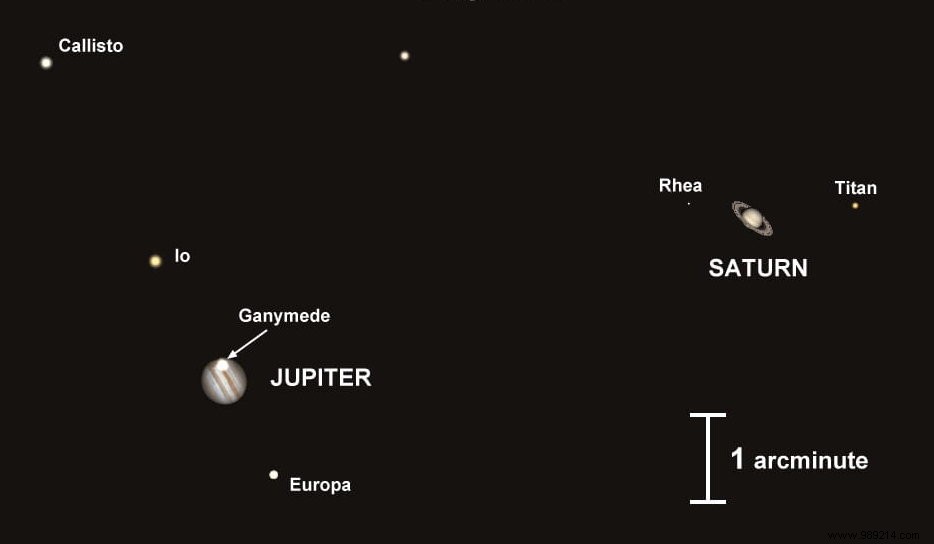On the evening of next December 21, Jupiter and Saturn will appear from Earth closer to each other than they have been since the Middle Ages . The perfect opportunity to get out the telescopes!
In the Universe, everything is in motion. It then sometimes happens that the celestial mechanics offers us beautiful spectacles such as alignments of planets. Next December, Jupiter and Saturn, the two largest planets in our System, will put on a show, appearing closer to each other for the first time since the 13th century .
“Alignments between these two planets are rather rare, occurring once every twenty years or so, but this conjunction is exceptionally rare due to the close proximity of the planets “, says Rice University astronomer Patrick Hartigan. "We would have to go back to the dawn of March 4, 1226 to see a closer alignment between those objects visible in the night sky “.
You may have noticed that Jupiter and Saturn have been getting closer for a few months (from our point of view, of course). On the other hand, from December 16 to 25, 2020 , the two gas giants will only be separated by a diameter less than that of a full Moon.
“On the evening of closest approach on December 21, they will look like a double planet, separated by only 1/5 the diameter of the full Moon “, continues the astronomer. "For most viewers, each of these planets and several of their largest moons will be visible in the same field of view that evening" .
Note that this event will be observable from any point on Earth (weather permitting). From France, the planetary duo should normally appear low in the sky for about an hour after sunset , until Christmas. And it's time to take advantage of it! Indeed, Jupiter and Saturn will no longer be so close before March 15, 2080. Then, we will have to wait until 2400.

In the meantime, curious astronomy enthusiasts can wait for the Geminid meteor shower, one of the most important of the year. Active between December 7 and 17, it promises an hourly rate of 60 to 75 meteors at its strongest, between December 13 and 14 . There may be more. In 2017, up to 150 shooting stars could be observed in an hour.